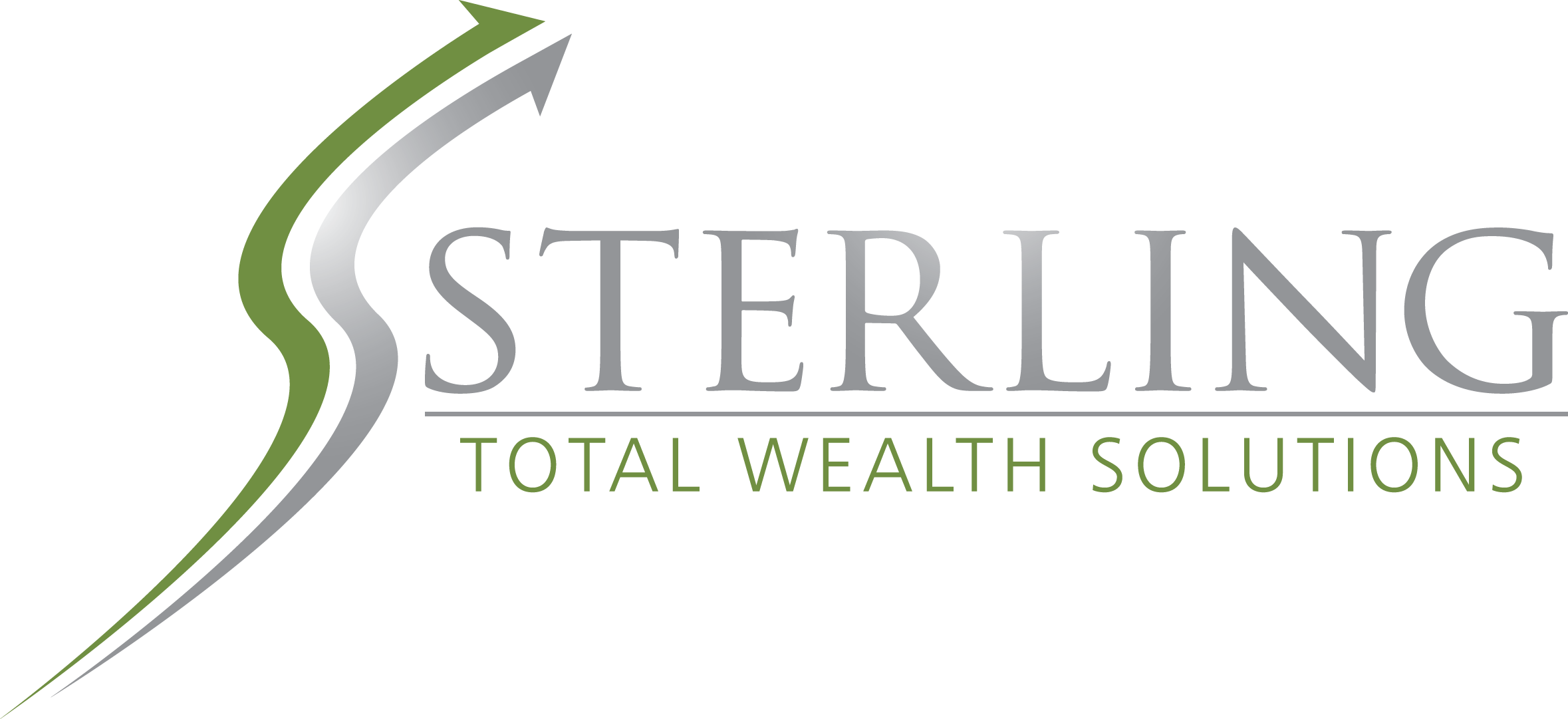In this month’s recap: Inaction on a second American fiscal stimulus bill and a rise in global COVID-19 cases put pressure on stock prices in October.
Monthly Economic Update
Monthly Economic Update | Presented by Sterling Total Wealth Solutions | November 2020
U.S. Markets
Inaction on a second American fiscal stimulus bill and a rise in global COVID-19 cases put pressure on stock prices in October.
The Dow Jones Industrial Average, which has lagged much of the year, dropped 4.61 percent. The Standard & Poor’s 500 Index lost 2.77 percent and the Nasdaq Composite slipped 2.29 percent.1
All About Stimulus
The perceived progress by lawmakers to pass a new fiscal stimulus bill continued to move markets. When negotiations appeared to be on track, stocks moved higher but retreated as talks stalled.
Investor optimism regarding a second stimulus bill was highest at the start of the month, igniting strong gains as October got underway. Market sentiment was further buoyed by news of advances in COVID-19 treatments and a growing conviction that November’s election may be less contested than initially feared.
COVID’s Influence
As the month wore on, market optimism waned as the window to pass a stimulus bill closed. As hopes for a fiscal stimulus faded, an increase in new COVID-19 cases in the U.S. and Europe continued to sour market sentiment. This caused many investors to contemplate what a second coronavirus wave might do to the economic recovery.
Strong Earnings
Amid the attention the stimulus talks and COVID cases garnered, earnings season also began last month. By October 30th, with 64 percent of the S&P 500 companies having reported earnings, 86 percent had performed above Wall Street estimates and above the five-year average of 73 percent.2
These strong earnings results had little effect on a market overwhelmed by large-scale issues. Selling accelerated in the final week of trading with no movement on the fiscal stimulus bill, a bump up in COVID-related hospitalizations, and a reinstatement of partial lockdowns in Germany and France.
Sector Scorecard Pressure
Utilities (+5.05 percent) was the only sector to post a gain in October. Communication Services (-0.34 percent), Consumer Discretionary (-2.73 percent), Consumer Staples (-2.87 percent), Energy (-4.11 percent), Financials (-0.87 percent), Health Care (-3.62 percent), Industrials (-1.44 percent), Materials (-0.72 percent), Real Estate (-3.18 percent), and Technology (-5.00 percent) closed lower.3
What Investors May Be Talking About in November
The U.S. election will take center stage this month, with the critical concern being whether the election results will be clear and decisive.
Should President Trump remain in office, investors may expect him to follow similar policy initiatives during a second term. If former Vice President Biden is elected, investors will be listening closely to public statements and potential cabinet appointments to gain insight into his policy priorities.
Regardless of who is elected, the markets are expected to look for signs of a new stimulus measure.
World Markets
A resurgence in COVID-19 infections, new economic lockdowns, and the growing prospect of a hard Brexit sent the MSCI-EAFE Index tumbling by 4.06 percent in October.4
Countries at the epicenter of the coronavirus resurgence in Europe were especially hard hit, with losses in Germany (-9.44 percent), France (-4. percent), Italy (-6.90 percent), and the U.K. (-4.92 percent).5
Pacific Rim stocks performed better, as Australia picked up 1.92 percent, and Hong Kong added 2.76 percent.6
Indicators
Gross Domestic Product: The economy expanded at a 33.1 percent annual rate in the third quarter, recouping about two-thirds of the pandemic-induced contraction suffered earlier in the year.7
Employment: Nonfarm payrolls grew by 661,000 in September. Hiring was slightly below expectations, but it was enough to drop the unemployment rate to 7.9 percent, down from the previous month’s 8.4 percent.8
Retail Sales: Consumer spending rose 1.9 percent, led by a 3.6 percent jump in motor vehicle sales. It was the fifth consecutive month of higher retail sales.9
Industrial Production: Industrial output fell 0.6 percent in September after four straight months of gains. Industrial production was 7.1 percent below its pre-pandemic February level.10
Housing: Housing starts rose 1.9 percent, as single-family home starts outweighed a decline in the more volatile multi-family segment.11
Existing home sales increased by 9.4 percent. Tight inventories drove the median home price higher to $311,800, a 14.8 percent jump from September 2019.12
After four straight months of increases, sales of new homes fell by 3.5 percent.13
Consumer Price Index: The cost of consumer goods rose by 0.2 percent in September, with a 6.7 percent jump in used cars and trucks. Additionally, inflation remained low, recording a 12-month increase of 1.4 percent.14
Durable Goods Orders: Orders for long-lasting goods rose 1.9 percent in September, the fifth consecutive month of increasing orders. Orders for nondefense capital goods, a proxy for business investment, went up by 1 percent.15
TIP OF THE MONTH

Check your bank account regularly for fraud? If you don’t bank online – do you carefully check your monthly statements? If not, you should.
The Fed
The minutes from September’s Federal Open Market Committee meeting reflected a Federal Reserve highly focused on the economy’s current state. Members expressed concerns about the lack of additional fiscal stimulus, and some suggested this stimulus gap could derail a full economic recovery.
Members supported providing forward guidance on the federal funds rate, which has a current target rate of between 0.00 and 0.25 percent. They also supported the new Federal Open Market Committee language, indicating inflation would have to average above 2 percent for a period of time before adjusting short-term rates would be considered.16
|
MARKET INDEX |
Y-T-D CHANGE |
October 2020 |
|
DJIA |
-7.14 |
-4.61% |
|
NASDAQ |
21.61% |
-2.29% |
|
S&P 500 |
1.21% |
-2.77% |
|
|
||
|
BOND YIELD |
Y-T-D |
October 2020 |
|
10 YR TREASURY |
-1.06% |
0.86% |
Sources: Yahoo Finance, October 31, 2020
Indices are unmanaged, do not incur fees or expenses, and cannot be invested into directly. These returns do not include dividends. 10-year Treasury real yield = projected return on investment, expressed as a percentage, on the U.S. government’s 10-year bond.
QUOTE OF THE MONTH

“I have no special talents. I’m only passionately curious.”
ALBERT EINSTEIN
THE MONTHLY RIDDLE

What is the significance of the following: The year is 1978, thirty-four minutes past noon on May 6th.
LAST MONTH’S RIDDLE: What is no sooner spoken than broken?
ANSWER: Silence.
Securities offered through Registered Representatives of Cambridge Investment Research, Inc., a Broker/Dealer, Member FINRA/SIPC. Advisory services offered through Cambridge Investment Research Advisors, Inc., a Registered Investment Advisor. Sterling Total Wealth Solutions and Cambridge are not affiliated.
To learn more about Sterling Total Wealth Solutions, visit us on the web at www.sterlingtotalwealthsolutions.com
Know someone who could use information like this? Please feel free send us their contact information via phone or email. (Don’t worry – we’ll request their permission before adding them to our mailing list.)
CITATIONS:
- The Wall Street Journal, October 31, 2020
- FactSet Research, October 30, 2020
- FactSet Research, October 31, 2020
- MSCI.com, October 31, 2020
- MSCI.com, October 31, 2020
- MSCI.com, October 31, 2020
- The Wall Street Journal, October 29, 2020
- The Wall Street Journal, October 2, 2020
- The Wall Street Journal, October 16, 2020
- The Wall Street Journal, October 16, 2020
- CNBC.com, October 20, 2020
- CNBC.com, October 22, 2020
- Reuters.com, October 26, 2020
- Reuters.com, October 13, 2020
- The Wall Street Journal, October 27, 2020
- CNBC.com, October 7, 2020
